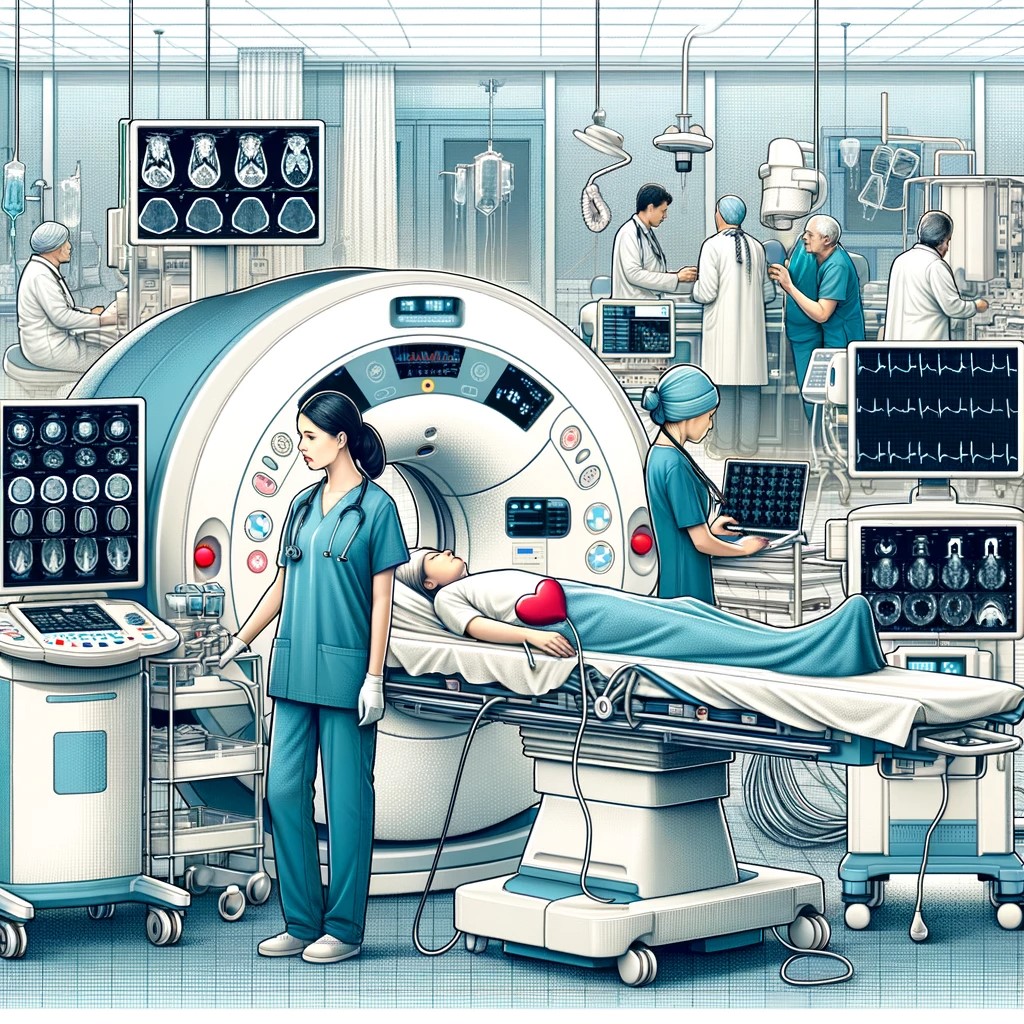You’re a medical device manufacturer, pouring your heart into creating life-changing products like diagnostic tools, implants, or wearables. Ever feel like one regulatory slip could halt your innovation or shut you out of global markets? That’s where ISO 13485 certification comes in—a must-have that proves your devices are safe, reliable, and ready for the world. For manufacturers aiming to make a difference, this certification is your path to trust and success. Let’s break down why ISO 13485 certification matters and how it can elevate your devices to the next level.
ISO 13485 certification is the international standard for quality management systems (QMS) tailored to medical devices. It ensures your processes—from design to delivery—meet strict safety and performance standards. Whether you’re crafting surgical instruments or cutting-edge monitors, this certification shows regulators and customers you’ve got quality locked down. Ready to see how it can make your devices stand out?
What’s the Buzz About ISO 13485 Certification?
So, what’s ISO 13485 certification all about? It’s a framework to build a QMS that keeps your devices safe and effective, from concept to customer. Think of it like a blueprint for a flawless production line—every step is planned, tested, and documented. It’s not about extra paperwork; it’s about creating systems that protect patients and boost your reputation.
Achieving ISO 13485 certification means mapping your processes, documenting every detail, and passing audits by accredited bodies like BSI or TÜV SÜD. You’ll test designs, train your team, and ensure compliance with global regulations. It’s a rigorous process, but the rewards are massive: access to international markets and a name synonymous with reliability. And honestly, there’s something pretty powerful about knowing your devices save lives.
Why Medical Device Manufacturers Need ISO 13485 Certification
Let’s keep it real. If you’re making medical devices, ISO 13485 certification is non-negotiable. It’s a must for meeting regulations in markets like the EU, Canada, or Asia, and it’s a signal to customers that your products are top-tier. Whether you’re a startup building wearables or a giant producing pacemakers, this certification sets you apart.
Why should you care? Here’s the lowdown:
- Market Access: Certification is required to sell in major markets—no stamp, no entry.
- Patient Safety: It ensures your devices are safe and effective, protecting lives and your brand.
- Regulatory Compliance: Meet standards like the EU’s MDR or FDA requirements with ease.
- Competitive Edge: Certified devices win trust in tenders, hospitals, and distributor contracts.
Ever felt that rush when your device gets market approval, knowing it’ll help people? That’s what ISO 13485 certification sets you up for—being the one who delivers life-changing quality.
What’s Involved in Getting ISO 13485 Certification?
The path to ISO 13485 certification is like designing a precision instrument—it takes care and focus. Here’s how it typically works:
- Gap Analysis: Review your processes against ISO 13485 to spot gaps—like incomplete risk assessments or weak supplier controls.
- Build a QMS: Create systems for design, production, and post-market surveillance, prioritizing safety and performance.
- Document Everything: Compile detailed records—think design histories, validation reports, and training logs.
- Train Your Team: Get engineers, QA staff, and leadership aligned on quality protocols.
- Face Audits: External auditors from firms like DNV will evaluate your QMS. Pass, and you’re certified; falter, and they’ll guide you to improve.
It sounds intense, but it’s manageable with support. Consultants or certification bodies can streamline documentation and audits, especially for complex devices. The result? Devices that meet global standards and a business ready to thrive.
A Quick Detour: Why This Matters in 2025
Let’s take a step back. It’s August 2025, and the medical device industry is under scrutiny. Just last month, a company faced a recall due to faulty design controls, shaking trust and costing millions. Regulators are tightening rules, and patients demand devices they can rely on. ISO 13485 certification is your shield, ensuring your processes are robust in a high-stakes landscape.
Here’s the thing: medical devices are global. Your product might be designed in Texas, manufactured in Asia, and sold in Europe. ISO 13485 certification ensures you meet international standards, from the EU’s Medical Device Regulation to Canada’s MDSAP. You’re not just checking boxes—you’re building devices that save lives and open markets.
How ISO 13485 Certification Benefits Your Business
Let’s get practical. ISO 13485 certification delivers results you can see and feel. Imagine your devices in hospitals worldwide, trusted by doctors and patients alike. Picture fewer regulatory headaches and more contracts. Here’s what you gain:
- Global Reach: Sell in markets like the EU, Canada, and Asia without regulatory roadblocks.
- Cost Savings: Catch design flaws or risks early, avoiding recalls or delays that cost millions.
- Customer Trust: Certification signals your devices are safe, turning prospects into loyal partners.
- Innovation Edge: A solid QMS frees you to focus on groundbreaking designs, not fixing mistakes.
It’s like giving your business a universal seal of trust. You’re not just making devices—you’re building a reputation for excellence.
Navigating the Certification Process
Picture this: You’re pursuing ISO 13485 certification for your new diagnostic tool. You start with a gap analysis, maybe with a consultant’s help, to spot weaknesses—like vague supplier controls or incomplete testing records. Next, you build a QMS, documenting design processes, risk management, and post-market plans.
Audits are the final hurdle. Auditors from firms like Intertek will scrutinize your systems, asking how you ensure safety and compliance. It’s thorough, but passing feels like launching a device with global potential. Many companies work with consultants to streamline documentation and training, especially for startups or intricate products. The key? Stay thorough and keep your team aligned.
The Emotional Reward: Why This Feels So Good
Let’s talk about the heart of it. ISO 13485 certification isn’t just about compliance—it’s about people. When you earn that certification, you’re telling patients, “Our devices won’t let you down.” You’re telling your team, “Your work saves lives.” That’s huge. It’s the kind of achievement that makes you proud to be in this industry.
Sure, there’ll be challenges. Regulatory mazes can feel daunting, and audits might test your patience. But with ISO 13485 certification, you learn to navigate those hurdles, turning complexity into opportunity. And when you see your device helping a patient or securing a hospital contract? That’s a win that hits deep.
Getting Started with ISO 13485 Certification (Without Tripping Up)
Ready to make ISO 13485 certification a reality? Here’s how to kick things off:
- Know the Standard: Skim ISO 13485 requirements beforehand. Free resources from the ISO website or FDA can give you a leg up.
- Set Clear Goals: Are you aiming to enter new markets, streamline design, or ace audits? Your focus shapes the process.
- Engage Your Team: Get designers, engineers, and QA staff aligned on quality goals.
- Partner Up: Work with accredited bodies or consultants to guide you through documentation and audits.
One mistake to avoid? Don’t treat ISO 13485 certification like a checklist. It’s tempting to rush through requirements, but the real value lies in embedding quality into your process. Ask questions, test systems, and make it real for your devices.
A Seasonal Nod: Why Now’s the Time
Here’s a thought: it’s August 2025, and the medical device industry is buzzing with new product launches—think advanced diagnostics or next-gen implants hitting the market. Starting your ISO 13485 certification journey now positions you to shine during peak season. Certified processes mean smoother approvals and fewer hiccups when demand spikes. Plus, with patient safety and innovation driving the industry, certification gives you a head start. Why wait to make your devices a trusted name?
Your Next Step Awaits
So, here’s the deal. ISO 13485 certification isn’t just a standard—it’s a commitment to safety, quality, and impact. It’s about building devices that save lives and earn trust. What’s holding you back? Maybe it’s the effort or the cost. But let’s be honest: the time you invest in ISO 13485 certification could open doors to new markets and opportunities you never imagined.
You’re not just certifying devices—you’re building a legacy of care. So, take the first step. Reach out to a certification body, rally your team, and get ready to lead with confidence. Your devices—and your patients—will thank you.



